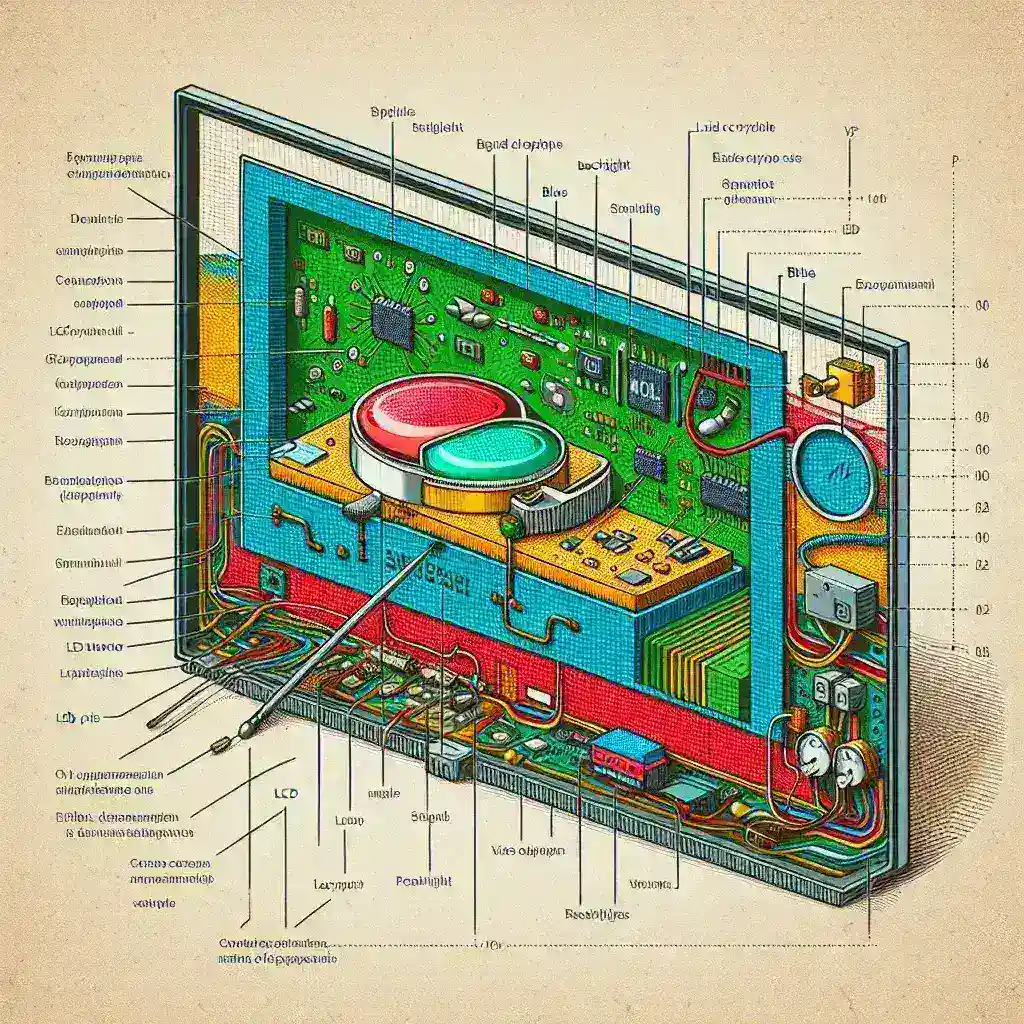Introduction to LCD Monitors
Liquid Crystal Display (LCD) monitors are a revolutionary technology that has transformed the way we consume visual content. Their invention has not only made the bulky Cathode Ray Tube (CRT) monitors obsolete but also introduced sharper, brighter, and more energy-efficient displays. But how exactly do LCD monitors work? This article delves into the science and technology behind LCD monitors.
The Basics of LCD Technology
At the heart of every LCD monitor are liquid crystals, substances that exhibit properties of both liquids and solid crystals. These crystals can modulate light when a current is applied, making them ideal for display technologies. The key components of an LCD monitor can be summarized as follows:
| Component | Description |
|---|---|
| Liquid Crystal Layer | Modulates light to display images. |
| Polarizing Filters | Ensure light travels correctly through the display. |
| Electrodes | Apply voltage to the liquid crystals. |
| Backlight | Provides the necessary illumination. |
Liquid Crystal Layer
The liquid crystal layer is the core component that manipulates light to produce images. The most common liquid crystals used are nematic liquid crystals, known for their effectiveness in modulating light. When voltage is applied, these liquid crystals align in specific ways to either block or allow light to pass through.
Polarizing Filters
Polarizing filters are essential in the operation of LCD screens. They are usually placed at the front and back of the liquid crystal layer. The primary purpose of these filters is to control the orientation of light passing through the liquid crystal layer, ensuring that only properly oriented light reaches the viewer’s eyes.
Electrodes
Electrodes are conductive layers that apply the electric current necessary to manipulate the liquid crystals. These electrodes are generally made from indium tin oxide (ITO) because of its transparent and conductive properties. The electrodes are positioned on either side of the liquid crystal layer and are responsible for creating the electric fields that control the orientation of the liquid crystals.
Backlight
The backlight is a crucial component that provides the light source for the display. LCD screens would be dark without it, as liquid crystals do not emit light themselves. The backlight is usually composed of LED lights or fluorescent tubes, with LED technology being the more energy-efficient and widely used option today.
How LCDs Display Images
To understand how LCDs display images, it is important to grasp the basic concepts of pixels, sub-pixels, and color creation:
Pixels and Sub-pixels
An image on an LCD screen is composed of tiny units called pixels. Each pixel is further divided into three sub-pixels: red, green, and blue (RGB). Manipulating these sub-pixels allows the screen to display a wide range of colors and create a full spectrum image.
Color Creation
By varying the voltage applied to each of the sub-pixels, the liquid crystals in the LCD screen can control how much light passes through them. This manipulation alters the intensity of red, green, and blue light that reaches the viewer’s eyes, thereby creating different colors. Combining different intensities of these three primary colors can produce millions of different colors.
Advantages of LCD Monitors
LCD monitors offer several advantages over older technologies like CRT monitors:
- Energy Efficiency: LCD screens consume significantly less power compared to CRT screens.
- Space-Saving Design: They are lightweight and take up less space.
- Better Image Quality: LCDs provide sharper and clearer images.
- Reduced Eye Strain: Modern LCD screens have minimal flicker, which reduces eye strain during extended use.
Common Applications of LCD Technology
LCD monitors are ubiquitous in today’s world. Here are some common applications:
- Computers and Laptops: Most modern computers and laptops use LCD screens.
- Televisions: LCD technology is widely used in HDTVs and smart TVs.
- Mobile Devices: Smartphones, tablets, and portable gaming consoles all employ LCD screens.
- Medical Equipment: LCD monitors are often used in medical imaging and diagnostic devices.
Conclusion
LCD monitors are a fascinating blend of science and technology. By understanding the intricate workings of liquid crystals, polarizing filters, electrodes, and backlights, one can truly appreciate the marvel that is the LCD screen. Their numerous advantages make them the preferred choice for a multitude of applications, from consumer electronics to medical imaging. As technology continues to advance, LCD monitors promise to become even more efficient and versatile, further solidifying their place in our everyday lives.

